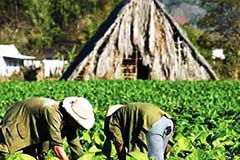Gallery & Art
Ask a question or send us your comment.
Ballet
 The Ballet Nacional de Cuba is one of the most prestigious dance companies in the world and occupies
a prominent place in contemporary Latin American culture. The artistic and technical rigor of its
dancers and the diversity in design of the choreographers, give this group an important place among
the great institutions of its kind in the international arena.
The Ballet Nacional de Cuba is one of the most prestigious dance companies in the world and occupies
a prominent place in contemporary Latin American culture. The artistic and technical rigor of its
dancers and the diversity in design of the choreographers, give this group an important place among
the great institutions of its kind in the international arena.
El Nicho
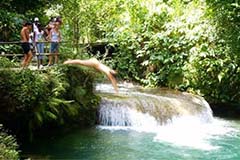 Dozens of waterfalls and natural ponds, in a place virtually untouched, hidden in the mountains is
El Nicho (the niche), a marvel of nature. El Nicho, located in the Park Guanayara, belonging to the
mountain ranger Guamuhaya (also known as Sierra del Escambray) in the province of Cienfuegos is a
heavenly place that combines the green of the vegetation, rivers, waterfalls and picturesque farm
villages. Undoubtedly El Nicho is one of the most beautiful spots in Cuba.
Dozens of waterfalls and natural ponds, in a place virtually untouched, hidden in the mountains is
El Nicho (the niche), a marvel of nature. El Nicho, located in the Park Guanayara, belonging to the
mountain ranger Guamuhaya (also known as Sierra del Escambray) in the province of Cienfuegos is a
heavenly place that combines the green of the vegetation, rivers, waterfalls and picturesque farm
villages. Undoubtedly El Nicho is one of the most beautiful spots in Cuba.
Cayo Jutia
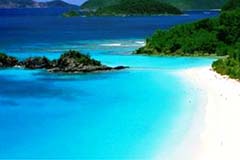 Cayo Jutía (Jutia Cay), one of the islands that make up the archipelago of Las Coloradas, in western
Cuba, is among the attractions for tourism in the province of Pinar del Rio. The beaches of the cay,
characterized by its fine sand, are frequented by hundreds of tourists every year. Several species
of indigenous birds are part of the fauna, in a relationship that includes the hawk batista, the
hummingbird and woodpeckers. Among the major attractions of the place is its lighthouse, one of the
oldest ones in the country with a history of over 100 years of service to navigation. A causeway
gives access to Cayo Jutía, which links the island to mainland and thus allows the arrival of
visitors and their awareness of the beauty of its landscape.
Cayo Jutía (Jutia Cay), one of the islands that make up the archipelago of Las Coloradas, in western
Cuba, is among the attractions for tourism in the province of Pinar del Rio. The beaches of the cay,
characterized by its fine sand, are frequented by hundreds of tourists every year. Several species
of indigenous birds are part of the fauna, in a relationship that includes the hawk batista, the
hummingbird and woodpeckers. Among the major attractions of the place is its lighthouse, one of the
oldest ones in the country with a history of over 100 years of service to navigation. A causeway
gives access to Cayo Jutía, which links the island to mainland and thus allows the arrival of
visitors and their awareness of the beauty of its landscape.
Malecón
Cathedral
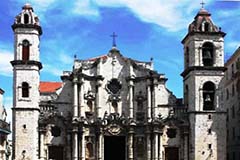 Located in the heart of Old Havana, classified historic World Heritage Site, the Cathedral of Havana
is a must-see during a trip to Cuba, for its architectural beauty of baroque style and its strong
colonial environment, which takes us centuries back in Cuban history. It was built in 1788 by the
wealthy Bishop of Salamanca, dedicated to the Blessed Virgin. Jesuits took charge of the plans;
extensions and embellishments, from 1802 to 1832, the Archbishop Díaz de Espada. Until the
independence of the island, the main hall holds a monument dedicated to Christopher Columbus. The
sculptures and the jewelry of the altar and the tabernacle were made by the Italian Bianchini.
Interior paints were made by the French painter Jean-Baptiste Vermay. Its baroque architecture and
its strong colonial environment, take us centuries back in the Cuban history.
Located in the heart of Old Havana, classified historic World Heritage Site, the Cathedral of Havana
is a must-see during a trip to Cuba, for its architectural beauty of baroque style and its strong
colonial environment, which takes us centuries back in Cuban history. It was built in 1788 by the
wealthy Bishop of Salamanca, dedicated to the Blessed Virgin. Jesuits took charge of the plans;
extensions and embellishments, from 1802 to 1832, the Archbishop Díaz de Espada. Until the
independence of the island, the main hall holds a monument dedicated to Christopher Columbus. The
sculptures and the jewelry of the altar and the tabernacle were made by the Italian Bianchini.
Interior paints were made by the French painter Jean-Baptiste Vermay. Its baroque architecture and
its strong colonial environment, take us centuries back in the Cuban history.
Planting Tobacco
Trinidad
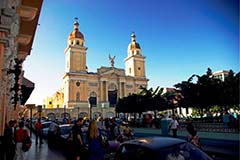 La Villa de La Santisima Trinidad (Holy Trinity Village) was the third town founded by the Spanish
Crown in Cuba, early in 1514. The town was founded on the presence of Diego Velázquez de Cuéllar,
and evolved quickly, which enabled him to be one of the most prosperous in the Caribbean region. The
conservation and restoration work undertaken by specialists in the love that its inhabitants had
towards their city this area of south-central Cuba, and the love that its inhabitants profess to
their city, led it to be one of the best preserved colonial cities, not only in Cuba but also in the
Americas, and to be on the List of World Heritage Site by UNESCO next to Mill Valley in 1988, an
area where the sugar industry flourished with the arrival of the Iznaga, Brunet and Borrell families
by the middle of the nineteenth century.
La Villa de La Santisima Trinidad (Holy Trinity Village) was the third town founded by the Spanish
Crown in Cuba, early in 1514. The town was founded on the presence of Diego Velázquez de Cuéllar,
and evolved quickly, which enabled him to be one of the most prosperous in the Caribbean region. The
conservation and restoration work undertaken by specialists in the love that its inhabitants had
towards their city this area of south-central Cuba, and the love that its inhabitants profess to
their city, led it to be one of the best preserved colonial cities, not only in Cuba but also in the
Americas, and to be on the List of World Heritage Site by UNESCO next to Mill Valley in 1988, an
area where the sugar industry flourished with the arrival of the Iznaga, Brunet and Borrell families
by the middle of the nineteenth century.
17ᵗʰ street, #260 (entrance by i)
Penthouse between i and j
Vedado, La Habana Cuba
Find us in the map.
+5352955700
+5378308727
Ydalgo Martínez
ydalgomtz@hotmail.com
ydalgo.martinez@nauta.cu
Artedel
Luxury Penthouse














